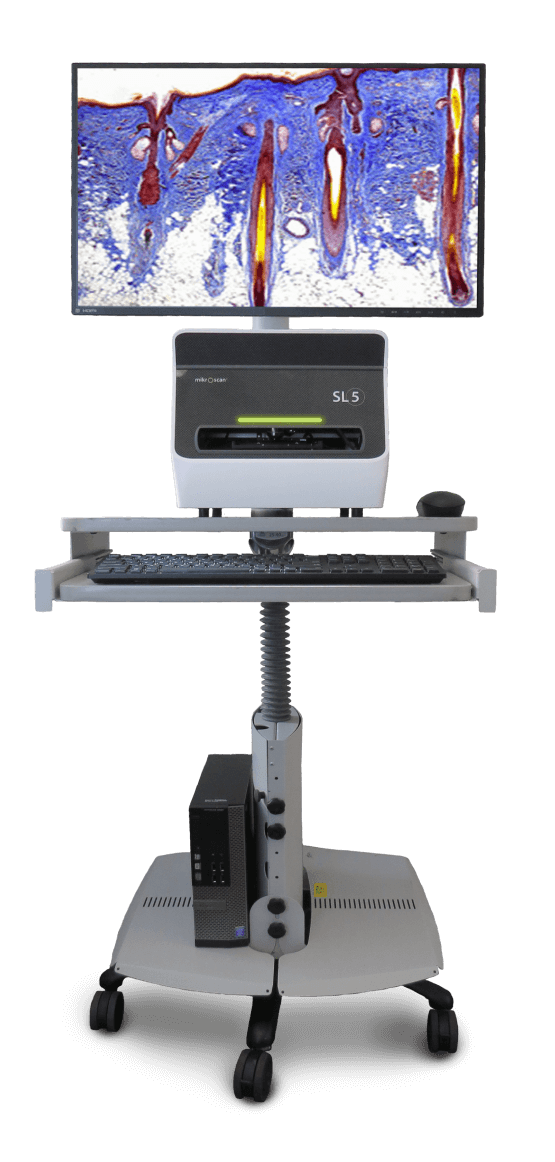Use our digital pathology systems for research, sharing, quality assurance, archival and retrieval, and image analysis.
Digital pathology begins with digitizing a glass slide specimen*, creating a whole-slide image that can then be used in place of the glass slide.
The traditional definition of digital pathology implied the scanning of all glass slides in an organization; a costly and perhaps unnecessary proposition. More and more, pathologists are taking a phased approach to digital pathology, scanning only the slides they need for certain applications, and using less expensive, lower-capacity systems than were first marketed for digital pathology.
Labs will find many advantages over the traditional glass-slide pathology workflow, no matter how far along the digital pathology path they are.
Digital images can be shared remotely by multiple simultaneous collaborators and experts from any location, eliminating the travel required to review glass slides. This capability is particularly important in today’s research environment, which involves multiple interdisciplinary teams located around the world in both commercial and academic research institutions.
Tumor boards and consultations also no longer have to rely on the availability of glass slides. Scan the most pertinent slides and then share easily.
Laboratories implementing a digital workflow can securely store and retrieve whole-slide images along with associated case meta-data. This convenience helps to better organize archival systems, and eliminates concern over breakage and loss of glass slides, as well as degradation over time.
With today's many powerful algorithms, quantitative image analysis can be performed on the whole-slide digital images, enabling faster, more accurate analysis of specimens.
This essential technology results in the reduction of expenses, enhanced efficiency and productivity, and improved decision support.
We provide the low-throughput, 2-slide capacity SL5 system and the medium-throughput, 20-slide capacity 5-20 system for use in research, sharing, image analysis, quality assurance, and archival and retrieval.
